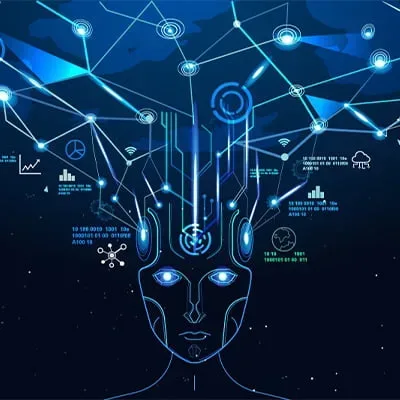AI Network Defense Benefits have emerged as a formidable solution to defend computer networks against sophisticated attacks. AI’s capability to learn from past attacks and adapt to new threats positions it as an innovative approach to bolstering network security.
AI Network Defense Benefits
- Continuous Learning and Improvement AI systems in network defense are designed for perpetual learning, enhancing their ability to detect and thwart attacks over time. This continuous improvement is pivotal in adapting to the dynamic nature of cyber threats.
- Scalability in Network Protection AI-driven solutions excel in scalability, making them ideal for safeguarding extensive networks. They outperform traditional security measures, which may falter under the strain of large-scale deployments.
- Customization for Organizational Needs Tailoring AI cybersecurity solutions to an organization’s specific requirements offers a significant advantage. Unlike the ‘one-size-fits-all’ approach of traditional methods, AI systems can be fine-tuned to align with an organization’s size, structure, and resources.
- Real-Time Defense Capabilities AI in network security provides real-time protection, analyzing data instantly to respond to threats. This stands in stark contrast to conventional methods that depend on manually updated rules or signatures, potentially delaying response to new threats.
- Minimizing False Positives AI’s ability to utilize contextual information significantly reduces the rate of false positive security alerts. This precision helps in focusing resources on genuine threats, avoiding unnecessary investigations into harmless activities.
Is AI the Optimal Choice for Your Cybersecurity Strategy?
The decision to incorporate AI Network Defense Benefits into your cybersecurity strategy is a significant one, considering the evolving landscape of digital threats. AI’s role in cybersecurity transcends traditional methods, offering a suite of benefits that cater to the modern demands of network defense.
- Adaptive Threat Detection and Response AI systems are not static; they learn and evolve, constantly updating their threat detection capabilities. This adaptability is crucial in a digital world where threats morph rapidly. Unlike traditional systems that rely on predefined threat databases, AI can identify and respond to new, previously unseen cyber threats, ensuring your network is safeguarded against the latest attacks.
- Scalable Security for Growing Networks As your organization grows, so does your network—and with it, your vulnerability to cyber attacks. AI’s scalability means it can effectively manage increased network traffic, more connected devices, and expanding data volumes without compromising on speed or efficiency. This scalability is essential for businesses experiencing growth or those with fluctuating security needs.
- Customization for Unique Security Needs Every organization has its unique set of security requirements. AI’s ability to be tailored to specific organizational needs sets it apart from ‘one-size-fits-all’ security solutions. AI can analyze your specific network environment and user behaviors, allowing for a more targeted and effective defense strategy.
- Real-Time Protection Against Cyber Threats In the digital age, the speed of response can mean the difference between a secured network and a costly data breach. AI-driven security systems offer real-time analysis and response to threats, a significant leap from traditional systems that may have delays due to manual updates or checks.
- Precision in Threat Identification AI reduces the noise of false positives—a common challenge in cybersecurity. By understanding the context and learning normal network behavior, AI can more accurately distinguish between legitimate activities and real threats, allowing your security team to focus on genuine concerns.
Consult with Grab The Axe for AI Network Defense Benefits
Integrating AI into your cybersecurity framework can seem daunting. This is where Grab The Axe steps in. Our experts in AI-driven cybersecurity solutions provide a comprehensive security assessment tailored to your organization. We aim to pinpoint vulnerabilities in your current system and demonstrate how AI, combined with other cybersecurity strategies, can enhance your digital defense. Our approach is not just about implementing AI; it’s about integrating it effectively into your existing security infrastructure for maximum impact.
Stay Ahead in Cybersecurity with AI
In a field as dynamic as cybersecurity, staying informed is staying protected. Subscribe to our updates and insights on AI in network defense. Our content delves into the transformative impact of AI in cybersecurity, offering the latest information and strategies to keep your network one step ahead of cyber threats.
By focusing on these expanded areas, the blog post provides a deeper understanding of AI’s role in cybersecurity and reinforces Grab The Axe’s expertise in this domain. The content is designed to engage, inform, and encourage action, aligning with the brand’s commitment to proactive and advanced security solutions.
References:
New Jersey Cybersecurity & Communications Integration Cell. (2021, January 14). The importance of physical security and its implications on cybersecurity. Retrieved from www.cyber.nj.gov
Hutter, D. (2016, July 28). Physical security and why it is important. SANS Institute. Retrieved from www.sans.org
To Learn More:
AI in Security Innovation: Revolutionize Protection
Unleash the Power of AI Network Security: Your Ultimate Defense Against Cyber Threats





Pingback: Business Security Services Phoenix AZ: A Strategic Approach to Safeguarding Your Enterprise - Grab The Axe
Pingback: Transform Your Security Strategy with AI-Enabled Security Solutions: A Comprehensive Case Study - Grab The Axe